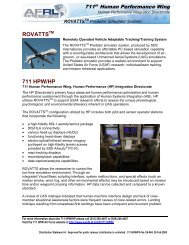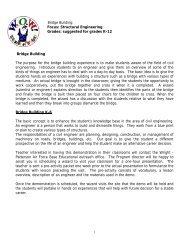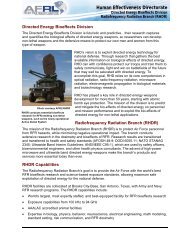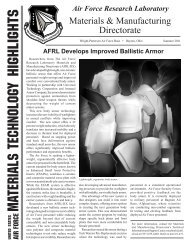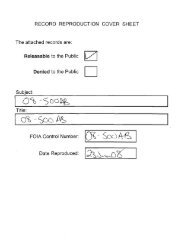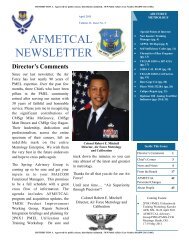TO 00-20-14 30 SEPTEMBER 2011 - Wright-Patterson Air Force Base
TO 00-20-14 30 SEPTEMBER 2011 - Wright-Patterson Air Force Base
TO 00-20-14 30 SEPTEMBER 2011 - Wright-Patterson Air Force Base
- No tags were found...
Create successful ePaper yourself
Turn your PDF publications into a flip-book with our unique Google optimized e-Paper software.
<strong>30</strong> September <strong>20</strong>11 <strong>TO</strong> <strong>00</strong>-<strong>20</strong>-<strong>14</strong>9.5.2 Documentation of RC analysis should concisely explain how and why the RC code was selected and what wasdone to correct the nonconformity. Make every effort to determine the true root cause of the NC and not just a symptom.Avoid simply restating the NC. Usually one “action or inaction” appears to be responsible, but a good RC analysis willaddress what caused the “action or inaction.”9.5.3 When review findings and RC analysis conclude there is reason to doubt the correctness or validity of calibrationresults, PMEL shall take immediate corrective action and initiate established recall procedures as necessary.9.5.4 The emphasis in RC analysis is to reach the most accurate RC code. As a minimum, document these steps:a. NCb. Possible RCsc. Most probable RC (rationale for selection)d. Corrective action for NCNOTERC analysis stops here; further investigation/follow-up may be performed as a resultof trend analysis.9.6 TREND ANALYSIS.Trend analysis is used to identify and correct negative trends. PMEL management shall periodically review the datacollected by the QP and track the most frequent QNC, PNC, and associated RC codes. Non-critical NC codes may alsobe tracked at the discretion of the manager. Management shall act upon the most prevalent RC of the most significant NCor trend or another prevalent RC and NC trend if management deems appropriate. Trend analysis shall be performed anddocumented at least semiannually.9.6.1 The emphasis in trend analysis is to identify the most effective corrective action. Document the following:a. State the most significant NC or trend (the trend may be comprised of more than one NC code as codes may begrouped to form a trend).b. Identify the most prevalent RC for the NC or trend stated in step a.c. Determine corrective action(s) that will eliminate or minimize the root cause or trend.d. Implement selected corrective action.e. Follow-up and assess the effectiveness of the corrective action. Return to step ‘c’ if the corrective action was noteffective.f. Standardize the corrective action within the PMEL. This step may include updating training plans and/oroperating procedures to ensure personnel are familiar with new procedures.9.7 QP ACTIVITY SUMMARY.A monthly QP activity summary shall include the following:a. QR.(1) Total production.(2) Total production subject to QR.(3) Total number of items selected for QR.(4) Total number of QRs completed.(5) Percent of total production completed for QR (number of QRs completed/ production subject to QR).(6) QR items with critical QNCs (bar code number and nonconformity codes).(7) QR items with critical PNCs (bar code number and nonconformity codes)(8) Number bypassed.b. PR.(1) List of PRs completed by ID number (do not reflect technician name/stamp/employee number).(2) Type of PR: Annual, Targeted.(3) NC/review status code assigned.(4) Number of targeted PRs.(5) Number bypassed.9-3




